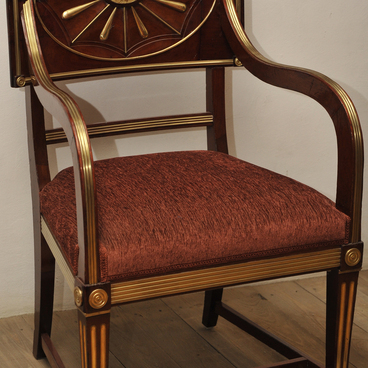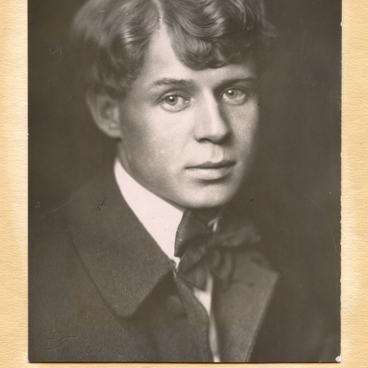The town of Spas-Klepiki is 80 kilometers distant from Ryazan. In the early ХХth century it was a large trading village. An education institution that trained teachers for grammar schools was opened there in 1896. Sergei Esenin attended this school from 1909 till 1912.
His sister Ekaterina recalled: ‘Father Ivan and Aunt Kapa were invited over. At the table they discussed the future of Sergei. Father Ivan and Aunt Kapa recommended to send him for further schooling and told where to study. Our father spent three days with us and again went away. After the father’s departure our mother often went to Popov’s, made up something, brought a small chest and put Sergei’s belongings into it. Then a horse drove over to our cottage, a stranger entered, everybody prayed to God, and the mother and Sergei drove away, leaving me with the neighbour. Sergei went to study in the Spas-Klepiki Two-year Teacher’s School’.
Konstantin Marushkin, a classmate of Esenin’s, described the school environment: “Our class was on the first floor, with eight unpainted student desks, a blackboard on the wall, and a black teacher”s desk.
Two students sat at each desk. Classes began at 8 am and lasted until noon. There was an hour for lunch and an hour of free time after lunch. At 2 pm we went back to our classrooms and each did our homework…
Our dormitory was on the first floor. Students of all classes were placed in one room. There were about 40 iron beds in rows, with white curtains over the windows. We were loaned a cotton-stuffed pillow and a hay-filled mattress, and everyone brought blankets and bedclothes from home.”
In 1985 the school building became the branch of the S.A. Esenin State Memorial Museum Preserve. In 2005 a new exposition going into detail not only on Esenin’s studies, but also on the way of life of the Klepiki students of late XIXth — early XXth centuries was opened to commemorate the 110th anniversary of the birth of the poet. The kitchen and apartments of the teachers, including that of Yevgeny Khitrov, who helped Esenin find himself as a poet, were reconstructed on the ground floor. The classrooms and boys’ dormitory were arranged on the first floor.
His sister Ekaterina recalled: ‘Father Ivan and Aunt Kapa were invited over. At the table they discussed the future of Sergei. Father Ivan and Aunt Kapa recommended to send him for further schooling and told where to study. Our father spent three days with us and again went away. After the father’s departure our mother often went to Popov’s, made up something, brought a small chest and put Sergei’s belongings into it. Then a horse drove over to our cottage, a stranger entered, everybody prayed to God, and the mother and Sergei drove away, leaving me with the neighbour. Sergei went to study in the Spas-Klepiki Two-year Teacher’s School’.
Konstantin Marushkin, a classmate of Esenin’s, described the school environment: “Our class was on the first floor, with eight unpainted student desks, a blackboard on the wall, and a black teacher”s desk.
Two students sat at each desk. Classes began at 8 am and lasted until noon. There was an hour for lunch and an hour of free time after lunch. At 2 pm we went back to our classrooms and each did our homework…
Our dormitory was on the first floor. Students of all classes were placed in one room. There were about 40 iron beds in rows, with white curtains over the windows. We were loaned a cotton-stuffed pillow and a hay-filled mattress, and everyone brought blankets and bedclothes from home.”
In 1985 the school building became the branch of the S.A. Esenin State Memorial Museum Preserve. In 2005 a new exposition going into detail not only on Esenin’s studies, but also on the way of life of the Klepiki students of late XIXth — early XXth centuries was opened to commemorate the 110th anniversary of the birth of the poet. The kitchen and apartments of the teachers, including that of Yevgeny Khitrov, who helped Esenin find himself as a poet, were reconstructed on the ground floor. The classrooms and boys’ dormitory were arranged on the first floor.



